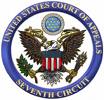 In the wake of a surge in bankruptcies, can a boom in bankruptcy fraud prosecutions be far behind? If so, district court judges will benefit from the Seventh Circuit’s opinion today in United States v. Peel (No. 07-3933), which addressed a number of unsettled legal questions.
In the wake of a surge in bankruptcies, can a boom in bankruptcy fraud prosecutions be far behind? If so, district court judges will benefit from the Seventh Circuit’s opinion today in United States v. Peel (No. 07-3933), which addressed a number of unsettled legal questions.
The facts in Peel were unusually lurid for a bankruptcy case. Back in the 1970’s, Peel had an affair with his wife’s sixteen-year-old sister. Although the affair ended after a few months, Peel kept several nude pictures of the sister. Some time later, Peel was divorced from his wife, and bankruptcy followed. Peel’s largest financial obligation was to his ex-wife: $230,000 plus an additional $2500 per month for the rest of his life, pursuant to the terms of the divorce settlement. The ex-wife filed a claim in the bankruptcy proceedings in order to ensure that these obligations were not discharged. Peel then attempted to pressure her into dropping the claim by threatening to release the nude pictures of her sister. The ex-wife complained to police, and Peel was eventually convicted of bankruptcy fraud, obstruction of justice, and possession of child pornography.
Judge Posner, writing for the court, addressed several issues relating to Peel’s convictions and sentence.
First, the court held that it was a violation of the Double Jeopardy Clause for Peel to be convicted of both obstruction and bankruptcy fraud. Although we normally think about double jeopardy as a successive prosecutions problem, the Clause also prohibits multiple punishment in the same case for the “same offense.” Here, since the government’s obstruction case was based on Peel’s bankruptcy fraud, the obstruction and bankruptcy fraud counts were really for the same offense: “convicting Peel of obstruction of justice did not require proof of any fact that didn’t have to be proved to convict him of bankruptcy fraud” (5). Thus, for double jeopardy purposes, convicting Peel of both crimes was no different than convicting a defendant of both murder and attempted murder for the same conduct. However, the Seventh Circuit left it to the district court’s discretion to decide which of the redundant convictions to eliminate.
Second, the court rejected Peel’s argument that because his fraud occurred in an “adversary proceeding” it did not count as bankruptcy fraud. Bankruptcy cases frequently involve adversary proceedings, in which collateral issues regarding debts are resolved. The status of these proceedings is not entirely clear; as the Seventh Circuit put it, “An adversary proceeding is . . . part of the bankruptcy but it is not the bankruptcy case itself” (8). The ambiguity is important in bankruptcy fraud prosecutions because “[b]ankruptcy fraud is fraud committed ‘in any case under title 11’ of the U.S. Code, that is, under the bankruptcy code” (9). Interestingly, the court could not “find any authority on whether all adversary proceedings in bankruptcy are ‘cases[s] under title 11.'” Rather than adopting a categorical rule on fraud in adversary proceedings, however, the court held on the specific facts of the case that Peel’s conduct counted as bankruptcy fraud since it might have had a large effect on the underlying bankruptcy case:
[S]ince the ex-wife’s claim in this case was the biggest claim in the bankruptcy proceedings, had the defendant succeeded in knocking it out by his fraud his action would have been fraud in the proceeding itself rather than in an adversary proceeding that had only a tangential effect on the overall bankruptcy case. (10)
This seems to leave open the possibility for future defendants to argue “tangential effect” as a defense to bankrupcy fraud.
Third, the court addressed the discounting of future losses for purposes of applying the federal sentencing guidelines. More specifically, the court held, “[I]f a defendant presents credible evidence for discounting a stream of future payments . . . the district court must consider it” (16). This holding actually has considerable significance outside the bankrupcy context, but also seems potentially important in any bankrupcy fraud case in which the defendant attempts to evade an obligation to make future payments. Thus, for instance, Peel’s fraud was intended to eliminate his obligation to make the lifetime payments of $2500 per month. Given Peel’s life expectancy, the government argued that Peel’s intended loss was $525,000. But Peel presented expert evidence indicating that the discounted present value of the losses was only $314,000. Although the calculations can be complicated, the basic logic is not:
Almost everyone would rather lose $2 in 20 years than $1 today, and this implies that the loss inflicted by appropriating a $2 benefit that the victim would have to wait 20 years to receive is less than taking $1 from him now. (16)
The district court in Peel held that the sentencing guidelines precluded discounting, but the Seventh Circuit indicated that evidence of present value must at least be considered. On the other hand, the court stopped short of holding that present value must always control loss calculations:
[T]he nature and circumstances of the defendant’s crime may make discounting to present value of only limited utility in assessing a loss. Peel’s attempted blackmail of his ex-wife is a case in point. A blackmailer is apt not to stick to his deal with his victim but instead to come back for more later, . . . so that the initially intended loss is apt to understate the loss to the victim had the blackmail succeeded. (18)
Finally, the Seventh Circuit held that it was error for the district court to include the value of the other bankruptcy claims filed against Peel in its loss calculation: “None of the other creditors (or anyone else) would have been hurt had the blackmail attempt succeeded; nor was it any part of the defendant’s intention to hurt them” (19).
